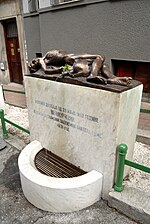Central Serbia

Central Serbia (Serbian: централна Србија / centralna Srbija), also referred to as Serbia proper (Serbian: ужа Србија / uža Srbija), is the region of Serbia lying outside the provinces of Vojvodina to the north and the disputed territory of Kosovo to the south. Central Serbia is a term of convenience, not an administrative division of Serbia as such, and does not have any form of separate administration. Broadly speaking, Central Serbia is the historical core of modern Serbia, which emerged from the Serbian Revolution (1804–17) and subsequent wars against the Ottoman Empire. In the following century, Serbia gradually expanded south, acquiring South Serbia, Kosovo, Sandžak and Vardar Macedonia, and in 1918 – following the unification and annexation of Montenegro and unification of Austro-Hungarian areas left of the Danube and Sava (Vojvodina) – it merged with other South Slavic territories into the Kingdom of Yugoslavia. The current borders of Central Serbia were defined after World War II, when Serbia became a republic within the Socialist Federal Republic of Yugoslavia, with Kosovo and Vojvodina as its autonomous provinces.
Excerpt from the Wikipedia article Central Serbia (License: CC BY-SA 3.0, Authors, Images).Central Serbia
Kneginje Ljubice, Belgrade Old Town (Stari Grad Urban Municipality)
Geographical coordinates (GPS) Address Nearby Places Show on map
Geographical coordinates (GPS)
| Latitude | Longitude |
|---|---|
| N 44.820555555556 ° | E 20.462222222222 ° |
Address
Kneginje Ljubice 21
11000 Belgrade, Old Town (Stari Grad Urban Municipality)
Central Serbia, Serbia
Open on Google Maps










